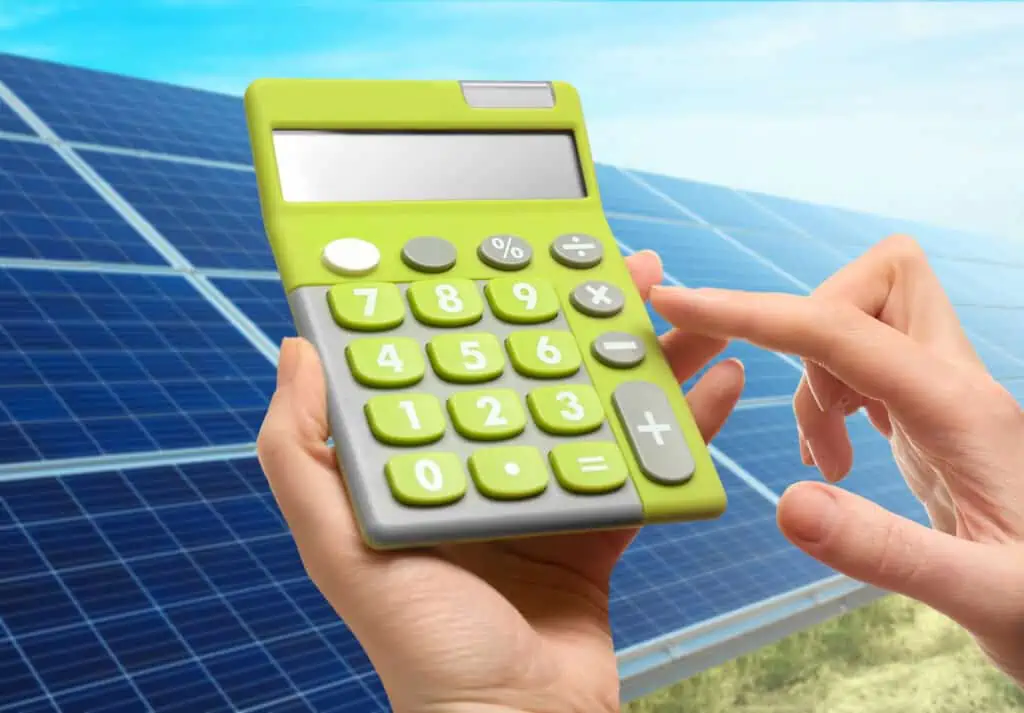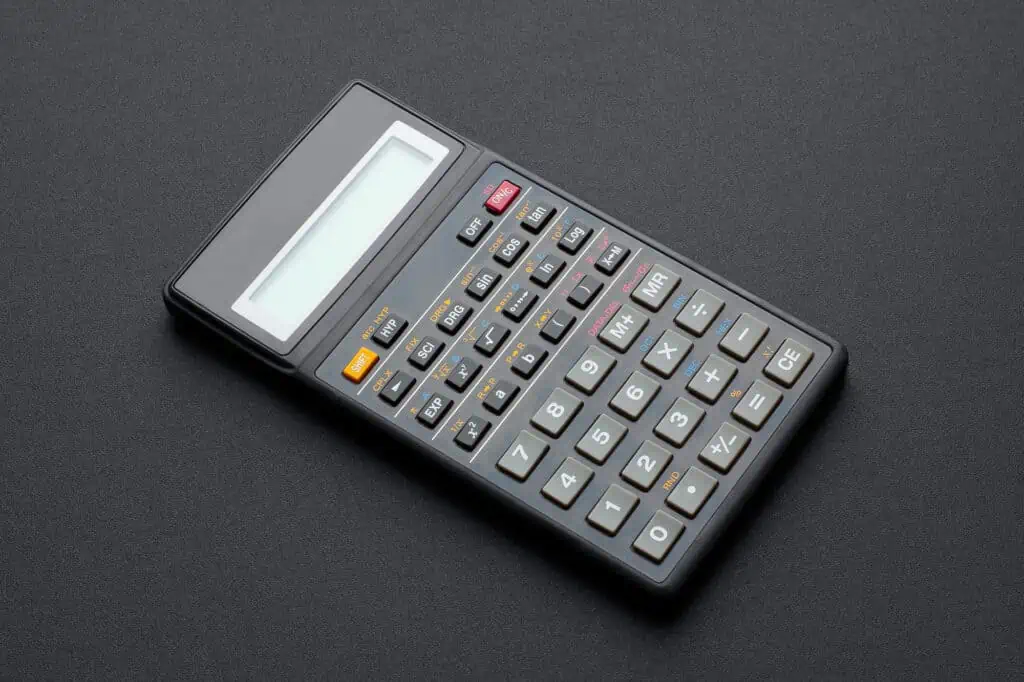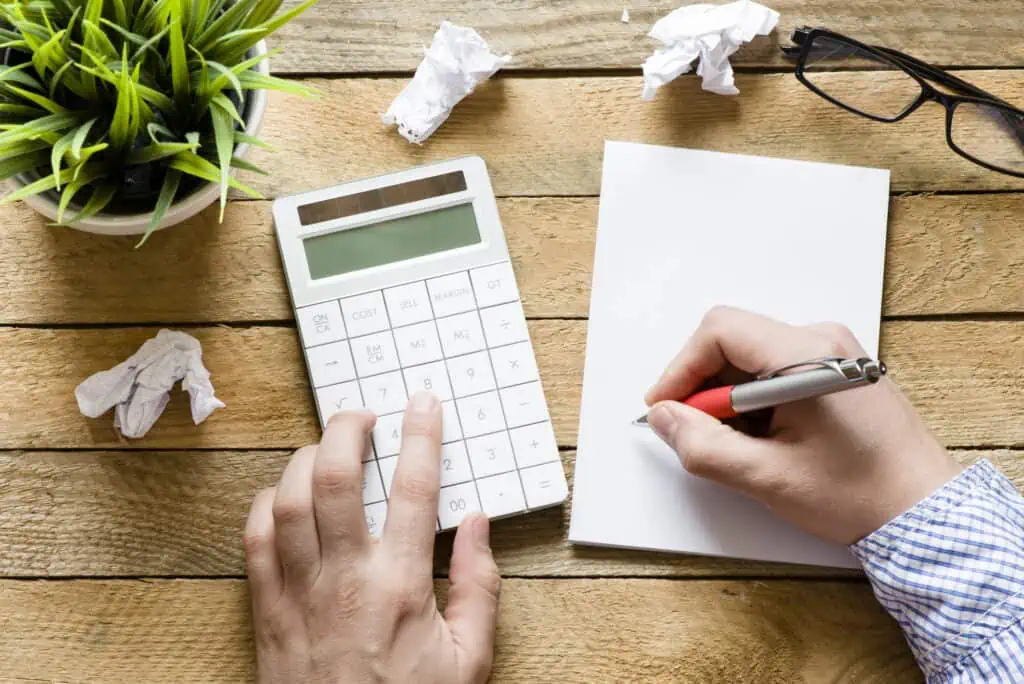Do you remember using solar calculators in school? They were a staple in math class and always seemed to work without needing batteries.
But have you ever wondered if they actually have batteries hidden inside?
The answer may surprise you.
Let’s explore the technology behind solar calculators. We’ll also cover whether you need to worry about battery replacement for these handy devices.
Contents
The Science Behind Solar Calculators
Solar calculators work by utilizing solar cells to convert light energy into electrical energy.
These solar cells are made up of semiconductor materials such as silicon. These materials are capable of absorbing photons of light.
When the photons are absorbed, they knock electrons free from atoms in the semiconductor material. It then creates a flow of electrical current.
The electrical current is used to power the calculator’s circuitry. This includes the display and the processor.
Unlike traditional devices, solar calculators can operate for extended periods of time without needing to be recharged.
Types of Solar-Powered Calculators
Because of technology, various types of calculators can now be powered by the sun. Here are some of them:
- Basic calculators: These are the most common type of solar-powered calculators. Standard calculators are simple and affordable. They are perfect for basic calculations. They usually have a single-line display and basic functions like addition, subtraction, multiplication, and division.
- Scientific calculators: These are designed for more advanced calculations like trigonometry, statistics, and calculus. They are perfect for students and professionals who perform these complex calculations. They usually have a multi-line display and advanced functions like logarithmic and exponential calculations.
- Graphing calculators: These are perfect for students and professionals who need to graph functions and equations. They usually have a large display and advanced graphing functions like zooming, tracing, and shading.
- Financial calculators: These are designed for financial calculations like loan payments, interest rates, and investment returns. They usually have a large display and advanced financial functions like amortization and depreciation.
- Programmable calculators: These are perfect for programmers and engineers who need to write and run programs. They usually have a large display and advanced programming functions like loops, conditionals, and subroutines.
Traditional vs. Solar-Powered Calculators
When choosing a calculator, you might be wondering whether to stick with the traditional option or switch to a solar-powered one.
Traditional calculators are powered by batteries. In contrast, solar-powered calculators use solar cells to convert sunlight into electricity.
So, what are the advantages and disadvantages of each? Here’s a glance at their features:
| Traditional | Solar | |
| Power source? | Batteries | Solar Power |
| Needs battery replacement? | Yes | No |
| Environmentally-friendly? | No | Yes |
| Upfront cost? | Low | High |
Now, let’s discuss each of these in more detail.
Traditional Calculators
Traditional calculators are the tried-and-true option that most people are familiar with. They are typically powered by batteries. They have a simple design with buttons for numbers, operations, and other functions.
- Run on batteries: Traditional calculators are a reliable source of power. They can last for months or even years, depending on usage. This makes them ideal for use in schools or offices where they are used frequently but not constantly.
- Need frequent battery replacements: The batteries of traditional calculators are easy to replace. This is because they are readily available in stores. But one downside is they can be expensive to maintain. You may need to replace the battery several times a year, which can add up over time.
- Not eco-friendly: Battery replacement for traditional calculators leads to a lot of waste. Battery production and disposal can also harm the environment due to the toxic chemicals.
- Cheaper upfront cost: Traditional calculators are much more affordable than other calculators. This makes them ideal for students or professionals. They’re also perfect for those who only need a simple and reliable calculator for everyday use.
Solar Calculators
Solar calculators are becoming increasingly popular due to their eco-friendly nature. They harness energy from the sun through the small solar panels on the calculator’s surface.
- Run on solar power: Solar calculators rely on solar energy. This means they do not require batteries or an external power source to operate. They can also be more reliable in the sense that they don’t drain as batteries do.
- Do not require battery replacements: Solar-powered calculators can be used without having to replace the battery. They can also last 5 to 20 years with proper care and maintenance. This makes them a more cost-effective option in the long run.
- Eco-friendly: Since solar calculators don’t require batteries, they do not contribute to environmental pollution or waste. This also helps reduce your carbon footprint. Their eco-friendly feature makes solar calculators perfect for those who are environmentally conscious.
- Higher upfront cost: One downside to solar calculators is that they are more expensive to buy than traditional ones. But while the initial cost may be higher, solar calculators can save you more money in the long run.
Are There Batteries in Solar-Powered Calculators?
Now, let’s reel back to our main question: do solar calculators have batteries?
Yes, there are batteries in solar calculators. But they are not the primary source of power.
Instead, batteries in solar calculators act as a backup power source. This is to ensure the calculator always has enough energy to function properly.
The main source of power for solar calculators is the solar panel. As long as there is enough light, the calculator will continue to function without needing batteries.
But there are times when the solar panel may not receive enough light to power the calculator.
For example, if the calculator is used indoors or in a low-light environment, the solar panel may not be able to generate enough electricity.
In these situations, the batteries in the calculator will kick in and provide the necessary power to keep the calculator running.
How Long Do Solar Calculator Batteries Hold a Charge?
Solar calculators have a small energy storage unit that can hold a charge for a limited amount of time.
Solar calculator batteries can take up to three hours to fully charge. They can also charge even without direct sunlight—as long as there is sufficient light from any nearby light source!
In general, these batteries last for 5–15 years without needing replacement.
But the lifespan of the solar battery varies, depending on some factors. These include:
- Calculator quality
- Battery capacity
- Amount of sunlight
How to Replace Batteries in a Solar Calculator
Solar-powered calculators have rechargeable batteries. They are charged by the solar panel on the calculator.
But these batteries can lose their ability to hold a charge after prolonged use. As such, you may need to replace them.
Fortunately, replacing the batteries in a solar calculator is relatively easy. It can even be done at home! Here’s a step-by-step guide on replacing them:
- Remove the battery cover on the back of the calculator. This is usually held in place by a small screw or clip. Once done, you should see the battery compartment.
- Remove the old batteries. You can do this by gently prying them using a small screwdriver or paperclip. Be careful not to damage the battery compartment while doing this.
- Replace the batteries with new ones. Make sure to use the same type of battery as the one you removed. You can find this information on the battery or in the user manual.
- Reattach the battery cover and secure it in place. Then, turn on the calculator to check if it is working properly. If not, check the battery contacts and ensure they are clean and debris-free.
Keeping Your Solar Calculator in Optimal Condition
Solar calculators do not need frequent battery replacements. But they still need proper care and maintenance to ensure they are working as they should. Here are some tips on keeping your solar calculator in optimal condition.
Store Your Calculator in a Safe Place
Store your solar calculator in a cool, dry place.
Avoid leaving it in direct sunlight or near a heat source. Doing so can damage the solar cells and other components.
Similarly, don’t store it in a damp or humid environment. Remember, moisture can cause the calculator to malfunction or corrode over time.
If you’re not using your calculator regularly, consider storing it in a protective case or sleeve. This will help prevent scratches while keeping it safe from dust and debris.
Clean Your Calculator Regularly
Dust, debris, and fingerprints can accumulate on the calculator’s surface. This can affect its performance and accuracy.
- Use a soft, lint-free cloth. Avoid using paper towels or tissues, as they can scratch the surface of your calculator. Instead, use a soft cloth made of microfiber or cotton.
- Use a mild cleaning solution. If your calculator is particularly dirty, you can use water and a small amount of dish soap. Avoid harsh chemicals or abrasive cleaners, as they can damage the calculator’s surface.
- Gently wipe the surface. Dip the cloth in the cleaning solution and wring it out well. Then, gently wipe the surface of the calculator. Be careful not to press too hard or get any liquid inside the calculator’s buttons or display.
- Dry thoroughly. After cleaning, use a dry cloth to wipe the calculator’s surface thoroughly. Make sure there is no moisture left on the calculator before using it again.
Avoid Exposing Your Calculator to Extreme Temperatures
Keep your calculator away from direct sunlight, extreme heat, and extreme cold.
Direct sunlight can cause the calculator to overheat and damage the internal components. So, it’s best to keep it in a shaded area.
If you need to use your calculator outside, try to find a shaded spot. You can also use an umbrella to block the sun.
Extreme heat can also cause damage to your calculator. If you leave it in a hot car or direct sunlight for too long, the internal components can warp or melt. This can render your calculator unusable.
In extreme cold, the battery may not work properly. As such, it can cause the calculator to malfunction or stop working altogether.
Keep your calculator away from windows and other sources of direct sunlight. Don’t leave it in a hot car!
Using Solar Calculators
Solar calculators are a great example of how technology can be both innovative and eco-friendly.
And the best part? You only need the sun to power them up! The batteries only serve as a backup for when the sun isn’t shining.
So next time you’re in the market for a new calculator, consider going solar and doing your part for the planet. It’s a small step, but every little bit counts!
For more information on solar power, please check out our other articles. Our goal is to make the whole concept of solar energy easier for those interested in knowing more.
Solar Comparison is here to help you make the switch to a sustainable and renewable energy source for our future. Contact us today so we can answer all your inquiries on solar panels!





